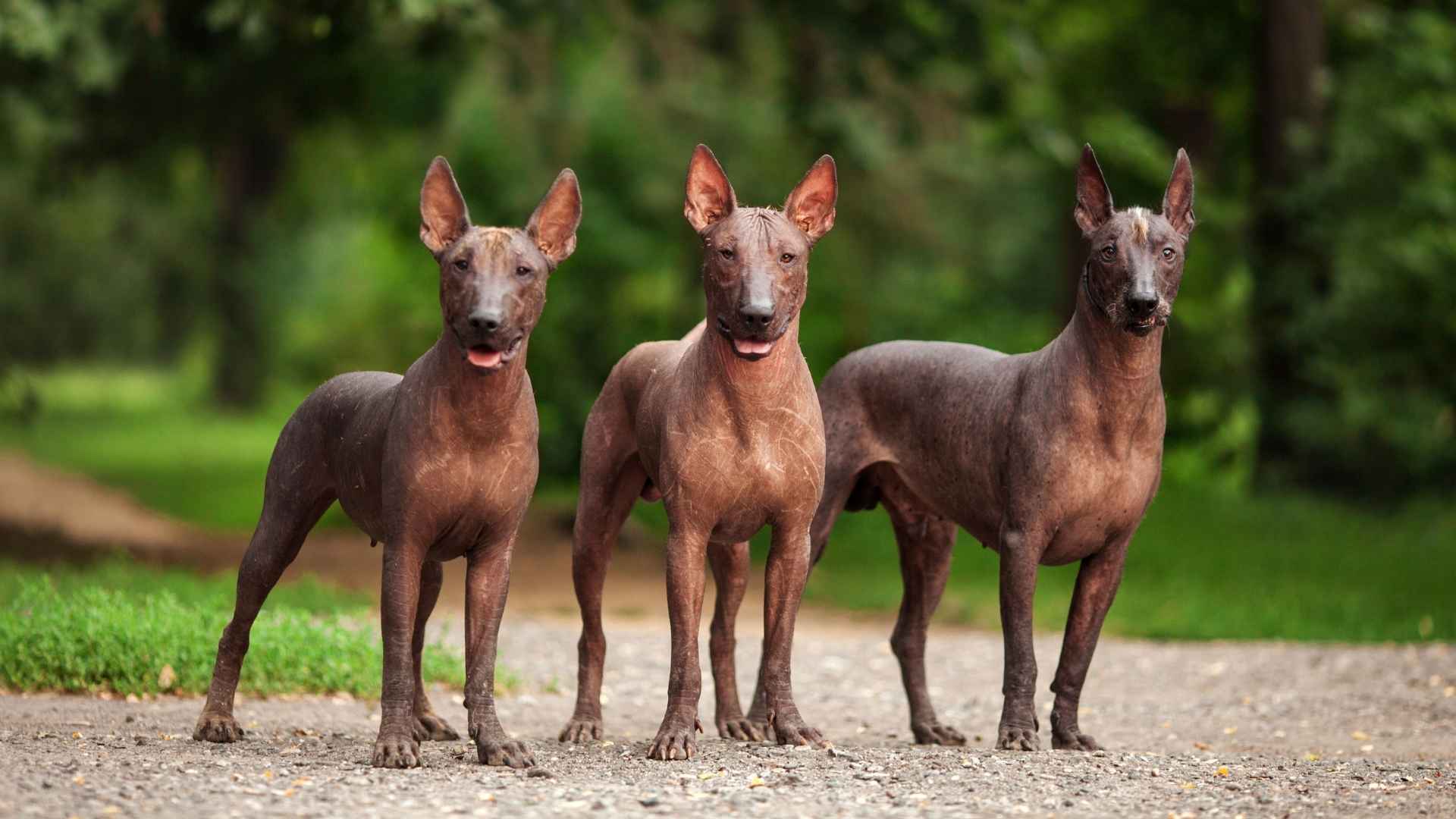What comes to mind when you hear “dog”? A floppy-eared Labrador? A tiny Chihuahua in a sweater? Now imagine a dog with dreadlocks, or one that’s completely hairless with wrinkled skin and bat-like ears. Sound strange? It’s real.
While many breeds follow a familiar look, the world of dogs is full of oddballs—breeds so unique they feel made up. But they’re not. These dogs exist, and they each come with their own history, purpose, and surprising charm. Some were bred for royal courts. Others for chasing vermin. A few just evolved in ways no one expected.
If you’ve ever wondered how weird a dog can get while still being lovable and loyal, this article is for you. Here, we’ll introduce you to a pack of bizarre and brilliant dogs that will completely reshape what you think “normal” looks like in the canine world.
Weird Dog Breeds
1. Chinese Crested
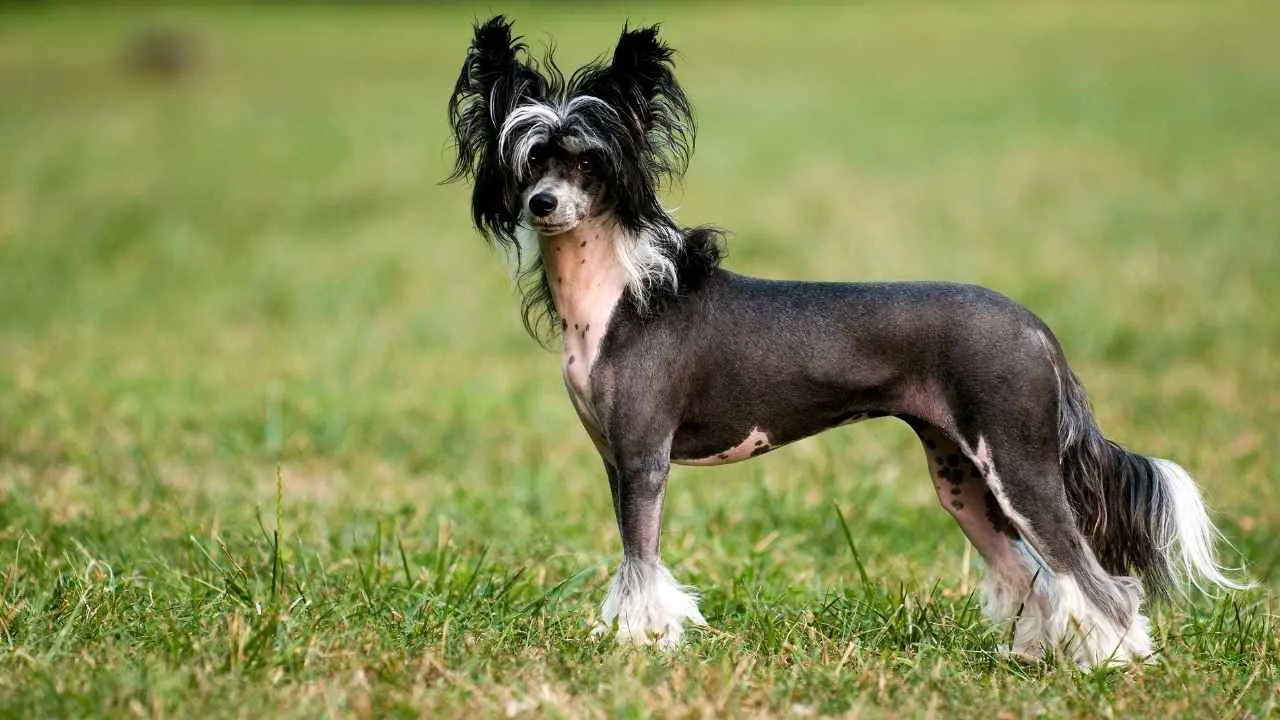
The Chinese Crested stands out for its nearly hairless body, paired with soft tufts on the head, tail, and feet. Their exposed skin feels warm and suede-like, often needing protection from the sun or cold. That contrast in texture gives them one of the most distinct appearances among all breeds.
Genetic Link to Teeth and Coat
Their unusual coat pattern comes from a dominant gene also responsible for dental abnormalities, as stated in scientific research. Many have missing or conical teeth, even with no health issues. This trait has been consistently documented in breed registries worldwide.
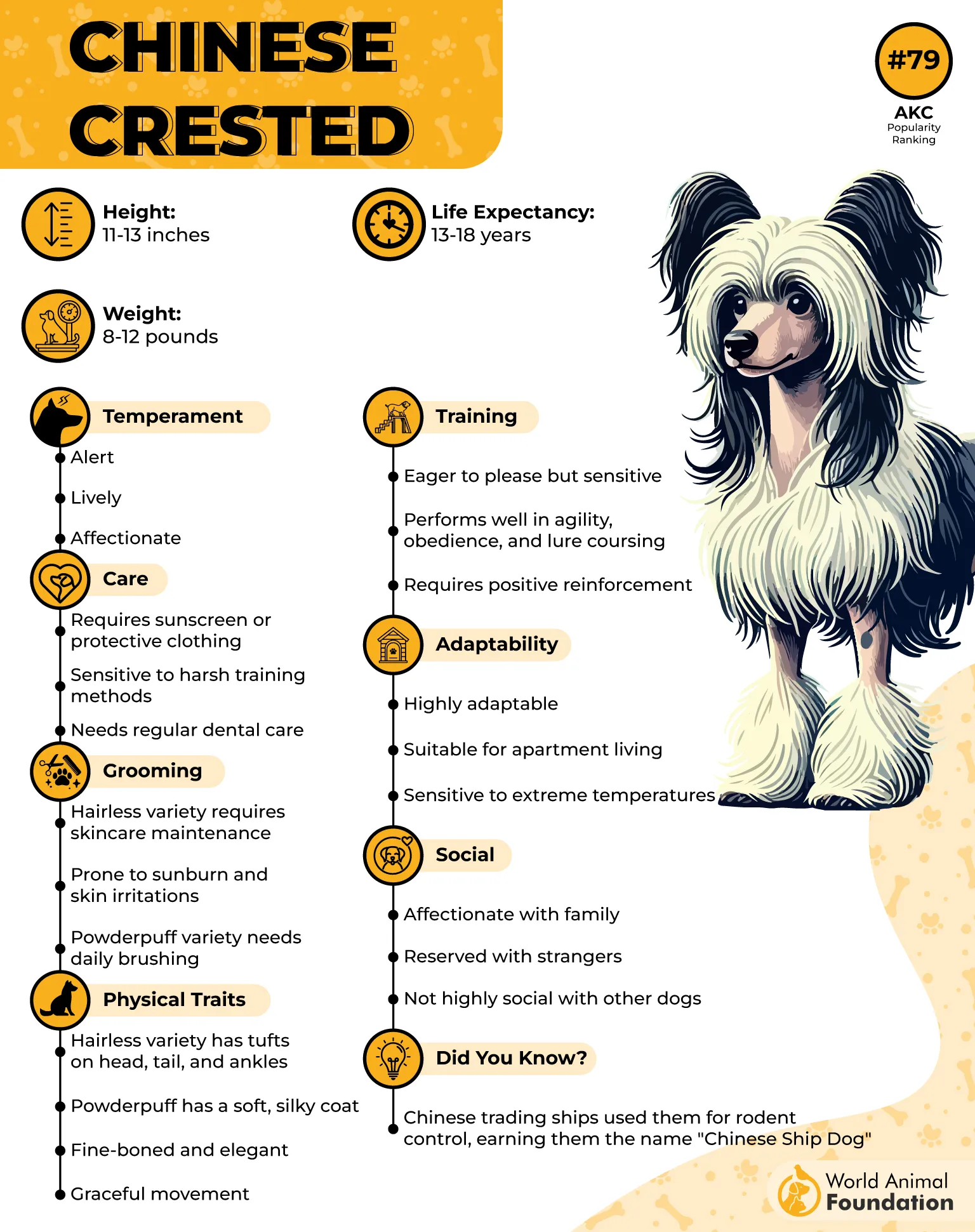
Stillness That Feels Uncanny
They often freeze in new surroundings, remaining completely still while observing quietly. This behavior is recognized in the dog world as breed-specific and somewhat eerie. It adds to their uniqueness, especially during shows or in unfamiliar settings.
Loved by a Curious Few
Their look may divide opinions, but they’ve built strong loyalty among experienced dog owners. They enjoy physical closeness and tend to follow their person from room to room without making noise. For the open-minded dog lover, they’re full of surprises beyond appearance.
2. Xoloitzcuintli
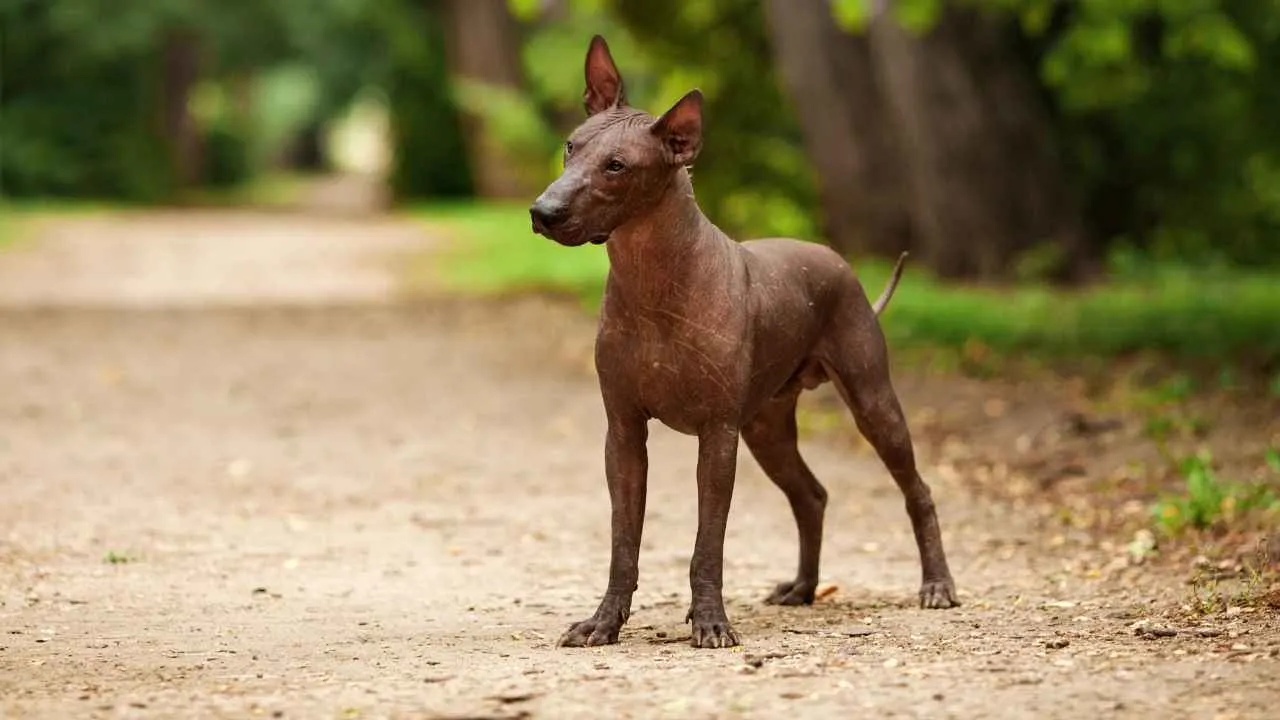
Did You Know: Xoloitzcuintli remains one of the oldest documented dog breeds, with archaeological evidence tracing back over 3,000 years in ancient tombs and Aztec ruins.
The Xoloitzcuintli has smooth, hairless skin. It feels warm, dry, and firm, which helps regulate body temperature in early climates. Their ears stand tall, making their silhouette immediately recognizable even at a distance.
Uncommon Skin Needs
Their skin isn’t oily, but it needs regular cleaning and protection from UV exposure. Many owners apply pet-safe sunscreen or light clothing outdoors to avoid sunburn. Blackheads and dryness are also common if their skin isn’t moisturized routinely.
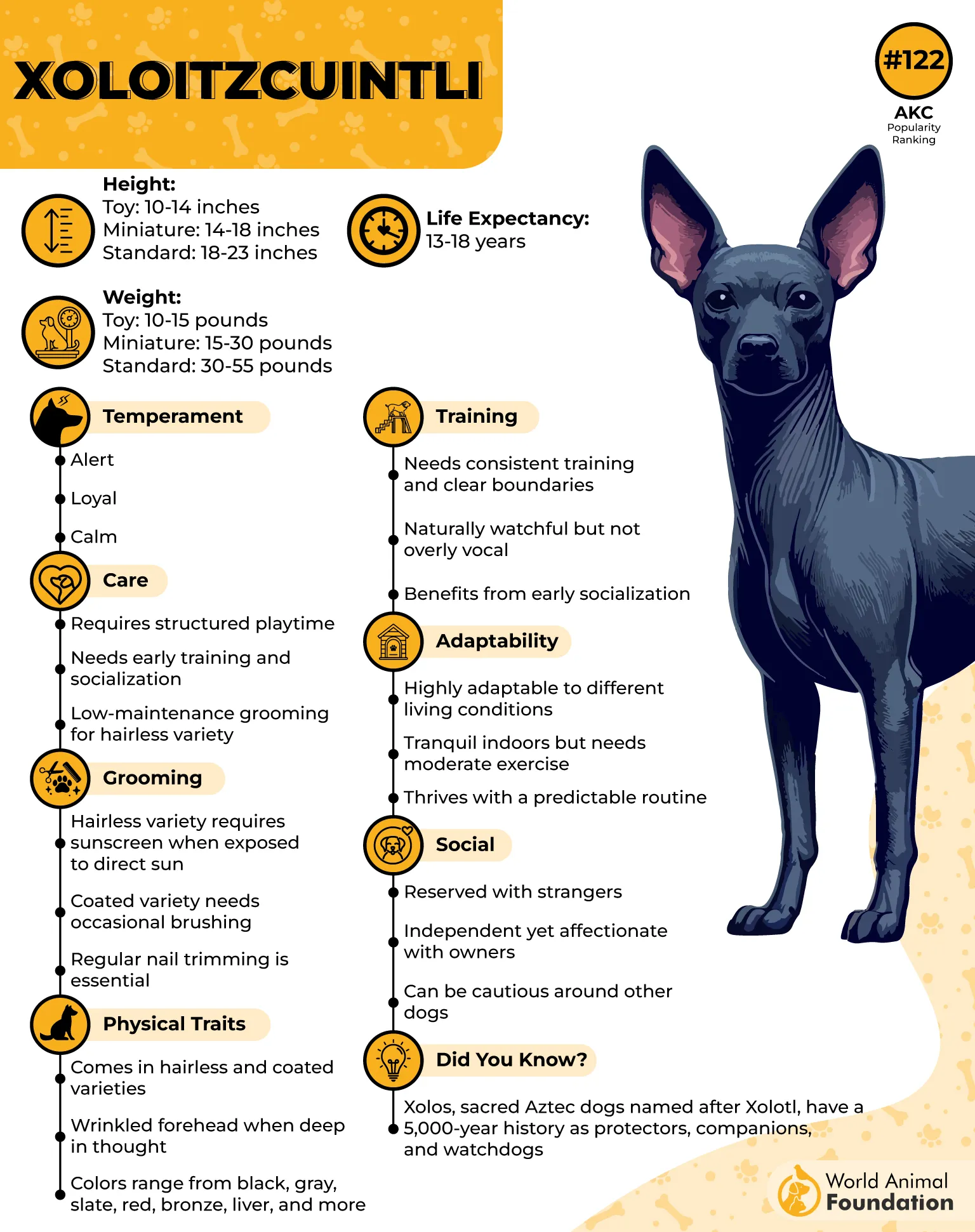
Behavior Rooted in Quiet Strength
This breed is known for its composed, confident nature and not barking unnecessarily, as per WebMD. They observe without being reactive, often standing completely still when sensing changes around them. Such calm awareness is often noted by longtime breed enthusiasts and handlers.
Presence in History and Culture
The Xoloitzcuintli was originally bred in Mesoamerica and is still considered sacred in Mexican tradition. Today, the Mexican hairless dog is registered in three sizes and continues to appear in national celebrations. They hold official status as a national symbol of heritage.
3. Brussels Griffon
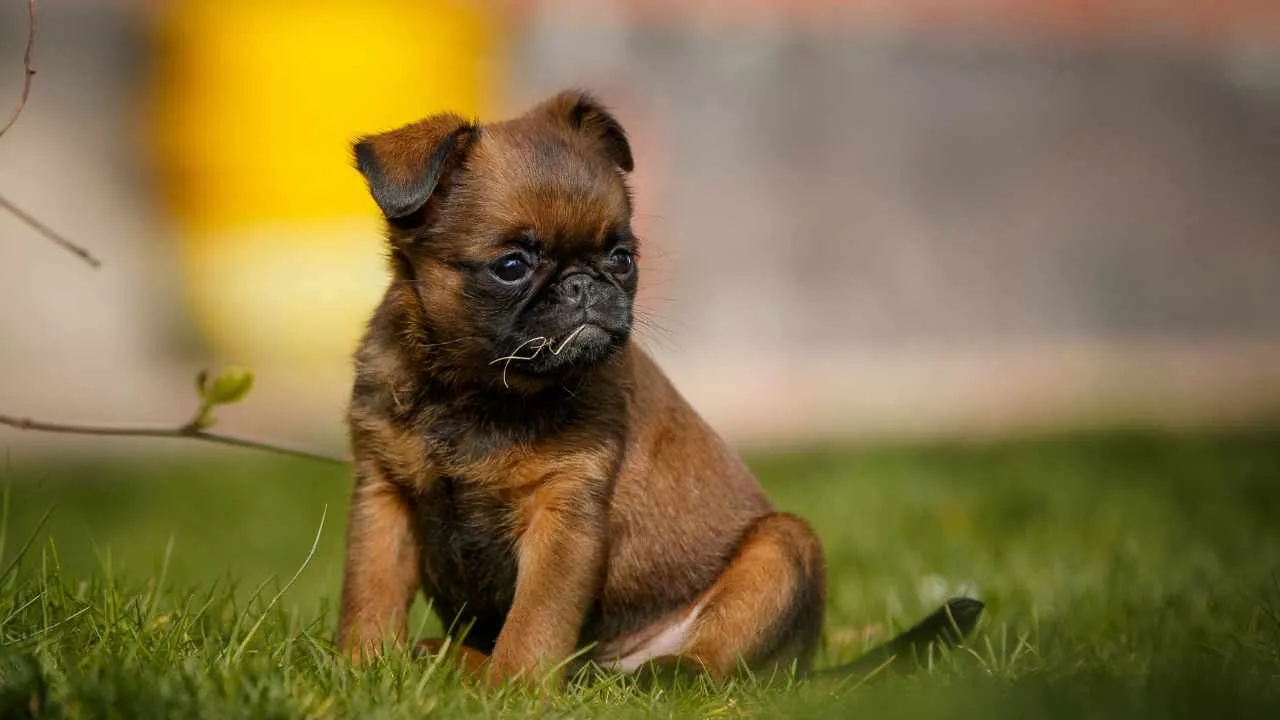
The Brussels Griffon has a signature pushed-in nose, wide-set eyes, and a beard-like muzzle that gives its face a human-like quality. Its wiry coat frames these features in a way that keeps their expressions sharp and animated. This look has earned the breed the nickname “monkey face” in various breed circles and kennel records.
Sharp Sounds and Distinct Vocal Style
Their bark is high-pitched and often used in bursts to signal specific needs or get attention indoors. Some owners note that their vocal tone changes slightly depending on mood or environment. The breed tends to be vocal, especially when interacting with familiar people or household pets.
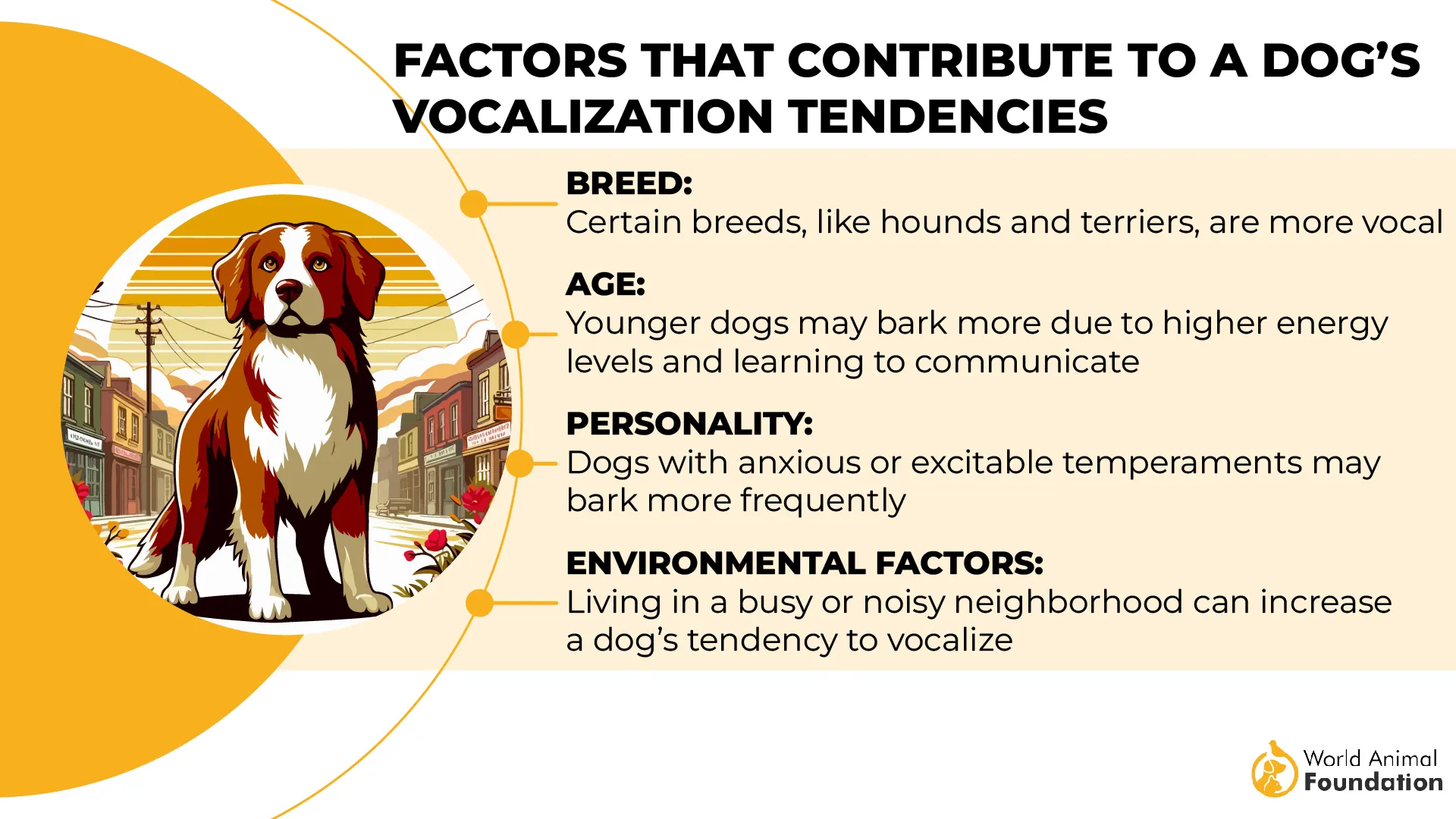
Small Frame with Strong Presence
They walk with a lifted head, quick steps, and an almost prancing stride that feels confident in any space. Their compact structure doesn’t affect how boldly they move around furniture or out in public. Muscles in the chest and shoulders support this upright movement, making them seem taller than they are.
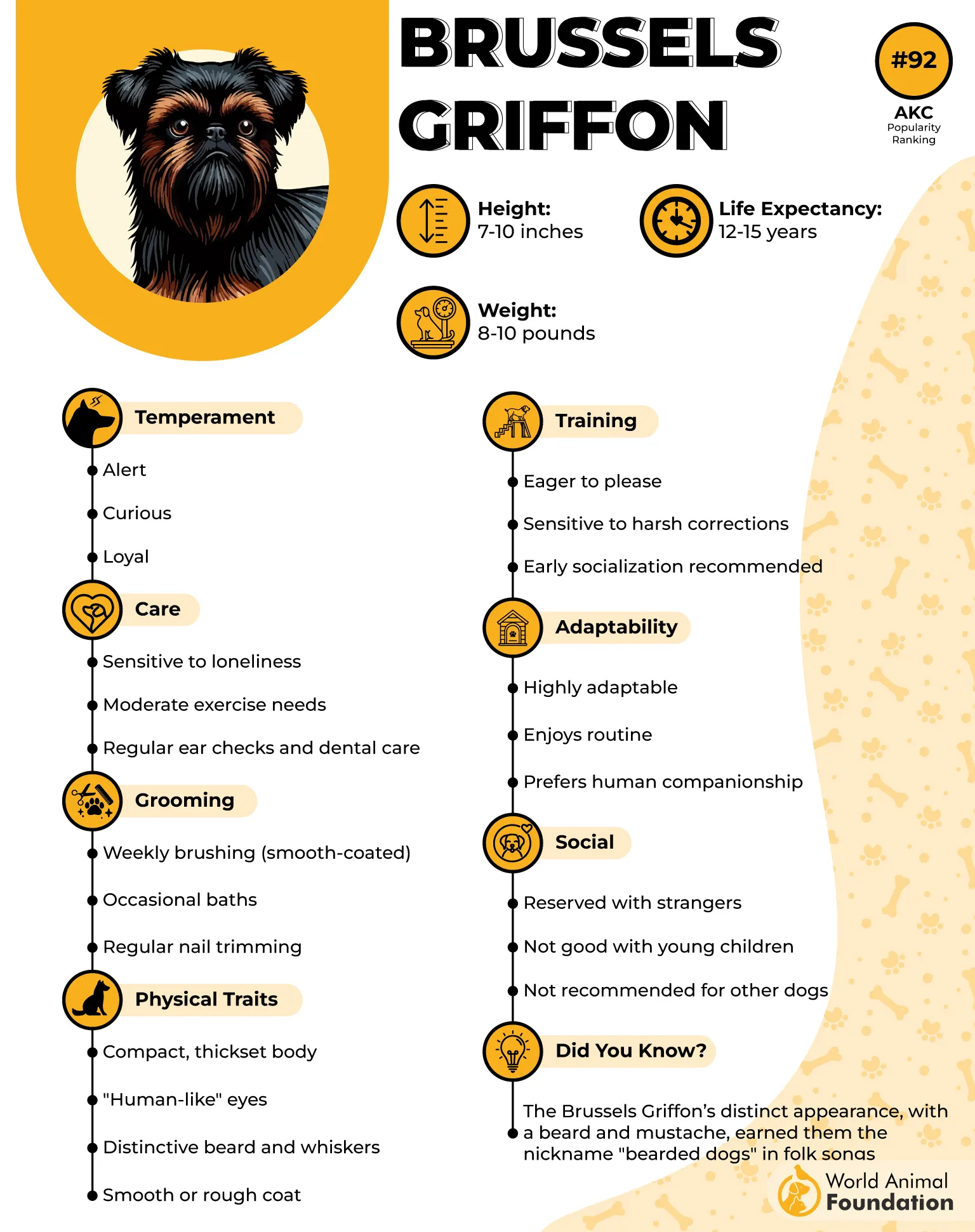
Best with Predictable Routines
They are naturally social and do well in homes with consistent daily patterns and moderate noise levels. Brussels Griffons can bond deeply with one or two people but still enjoy being around calm, respectful children. Apartment living suits them when mental engagement and company are part of their day.
4. Bedlington Terrier
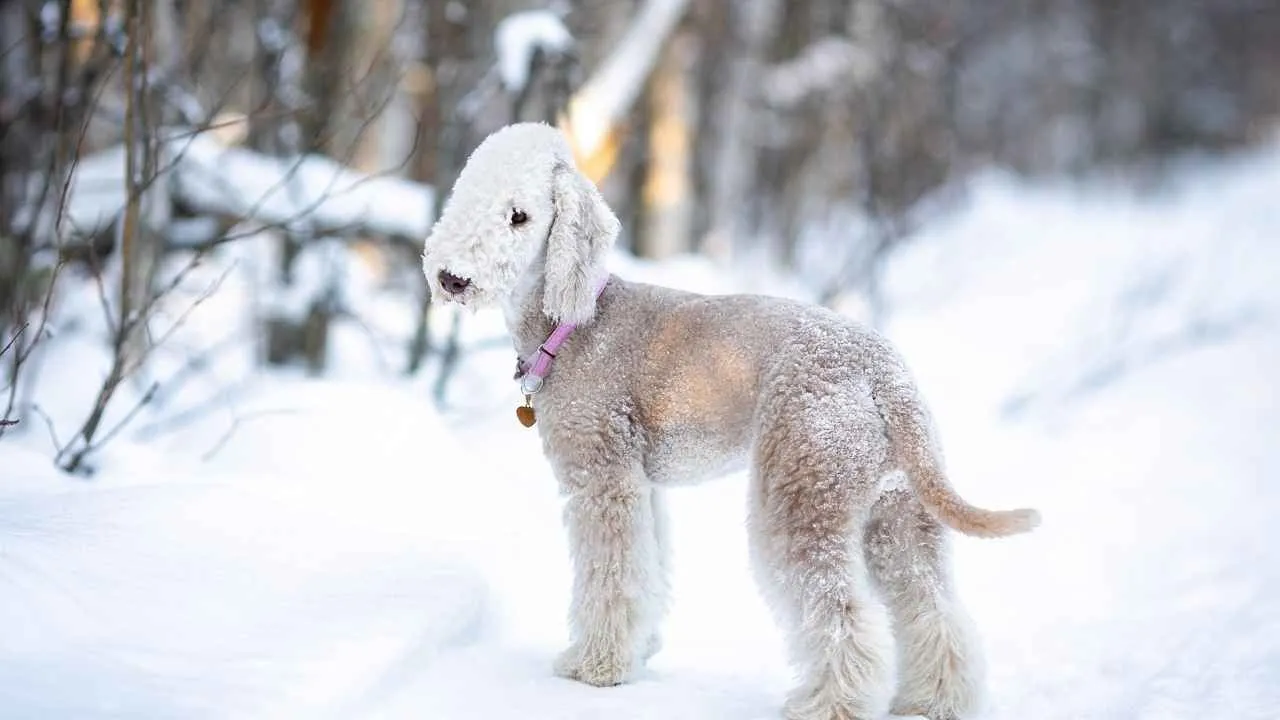
At first glance, the Bedlington Terrier resembles a lamb due to its arched back, pear-shaped head, and woolly coat. The coat feels crisp yet velvety, maintained through frequent trimming and hand-scissoring. Groomers often sculpt the ears and topknot to enhance their sheep-like silhouette.
Coat That’s Uncommon Among Terriers
Their coat is a mix of hard and soft hair that doesn’t shed in clumps, making it unusual for terriers. The texture is distinct—thick at the roots and lighter toward the ends. That difference gives it a plush bounce when freshly clipped.
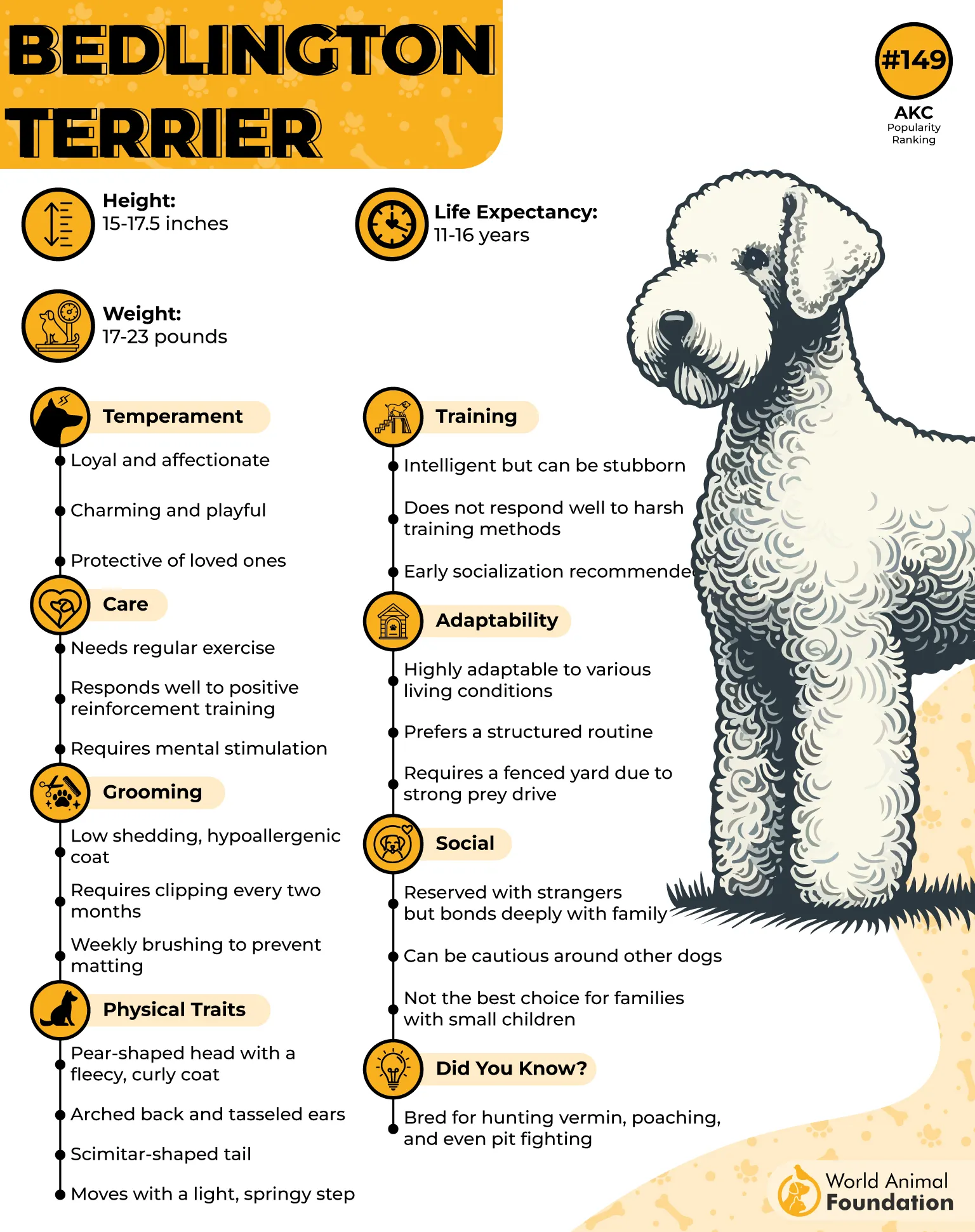
Temperament Hidden Beneath Style
They are alert and energetic with a natural sense of competition, especially in open space. Many owners describe them as fast, determined runners once outdoors. This streak contrasts with their calm look, separating them from nearly every other breed in the group.
A Balance of Grace and Grit
Though elegant in appearance, they were historically used for racing and vermin control in coal-mining towns. They’re highly adaptable, becoming both bold and playful when stimulated through activity. Their physical stamina still surprises those unfamiliar with their working background.
5. Shar-Pei
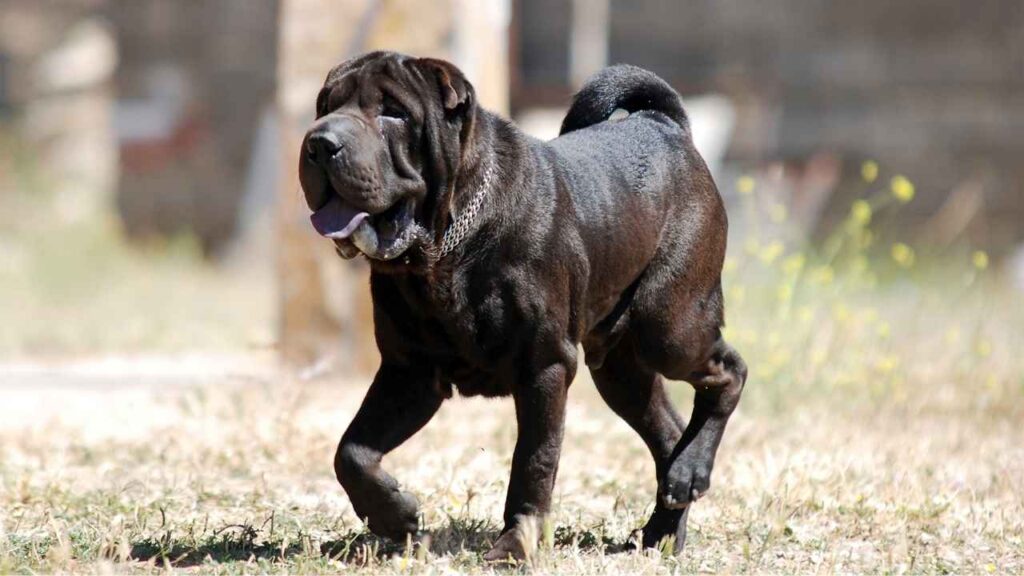
The Shar-Pei is known for its thick folds of skin, especially around the head and shoulders, giving it a deeply textured appearance. These folds are soft yet substantial, requiring close inspection to appreciate how they form naturally. Their coat is short, dense, and often compared to brushed suede.
Coat Texture and Grooming Requirements
According to Shiwsight Magazine, there are two coat types in Shar-Peis: “horse coat” and “brush coat,” both of which feel distinctly coarse but carry a soft base layer.
Despite their rugged look, brushing is minimal—once a week is often enough to remove debris and loose hairs. Their coat lacks an undercoat, making shedding light.
Reserved Nature and Singular Loyalty
Shar-Peis are naturally wary of strangers but form intense bonds with those they trust. Their calm energy and preference for quiet spaces make them less reactive in noisy settings. They tend to observe before engaging, giving them an air of thoughtful self-control.
Ancient Breed with Distinctive Traits
They were originally bred in China over 2,000 years ago and were used for both guarding and farm duties. The breed’s blue-black tongue is one of the rarest traits found in domestic dogs today. Their overall appearance remains close to their ancient lineage, with minimal modern alterations.
6. Neapolitan Mastiff
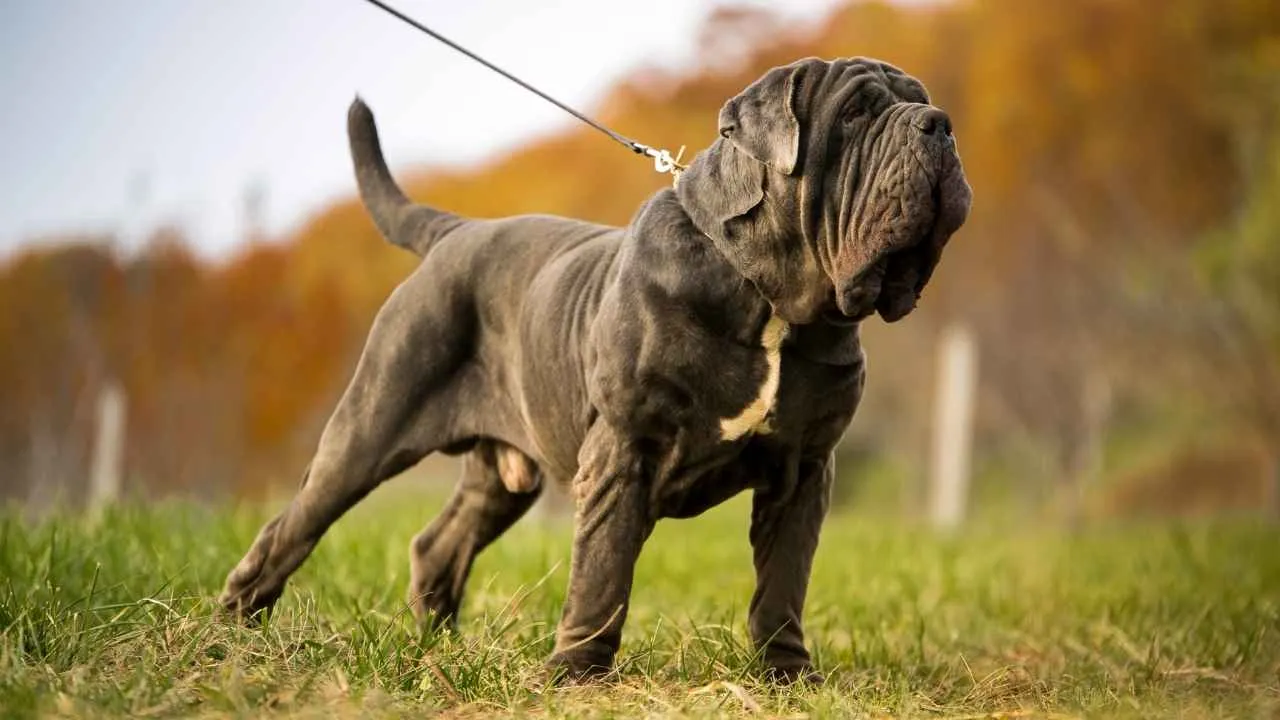
The Neapolitan Mastiff is instantly recognized by its loose, wrinkled skin that drapes heavily across its face and body. These deep folds serve a protective function, shielding vital areas during physical contact. The breed can weigh over 150 pounds, with a body built for guarding rather than agility.
Ear Structure and Natural Shape
Their ears are typically pendant-shaped and sit close to the cheeks, blending with the surrounding folds. Some countries allow cropped ears, but natural ears are soft and thick, adding to the dog’s signature look. The ear texture itself is dense, not wispy or feathered.
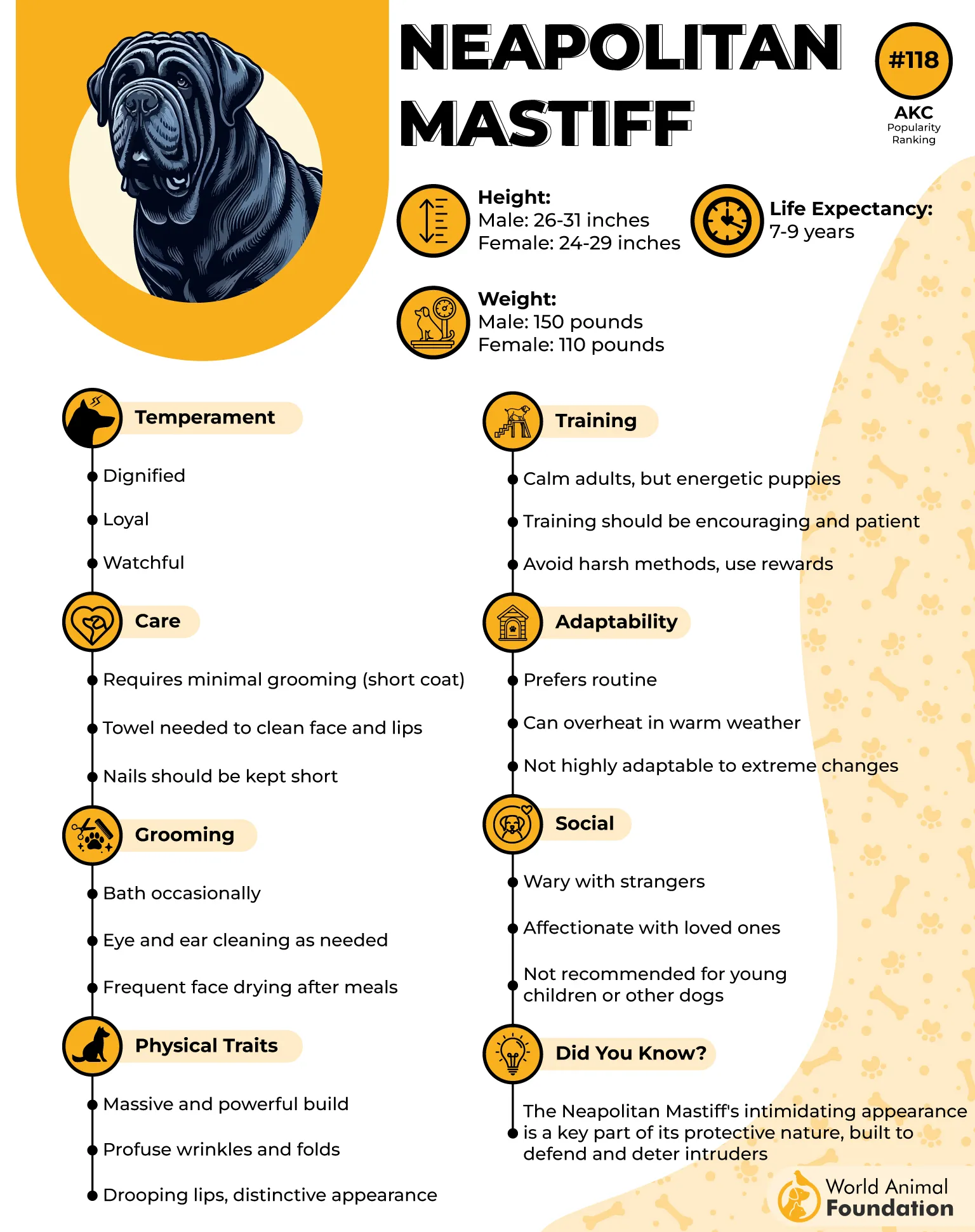
Quiet Watchfulness Over Loud Energy
Despite their intimidating size, Neapolitan Mastiffs are known for their calm and observant nature. They stay alert indoors, often moving slowly but deliberately in response to unfamiliar sounds. Their low-energy temperament doesn’t mean they’re lazy — they’re just deliberate in every step.
Close Bonds Built on Trust
They form attachments through consistency and are particularly attuned to routine. Owners report that Neos don’t warm up instantly but develop loyalty over time. Once trust is built, they become silent companions who prefer close presence over constant interaction.
7. Peruvian Inca Orchid
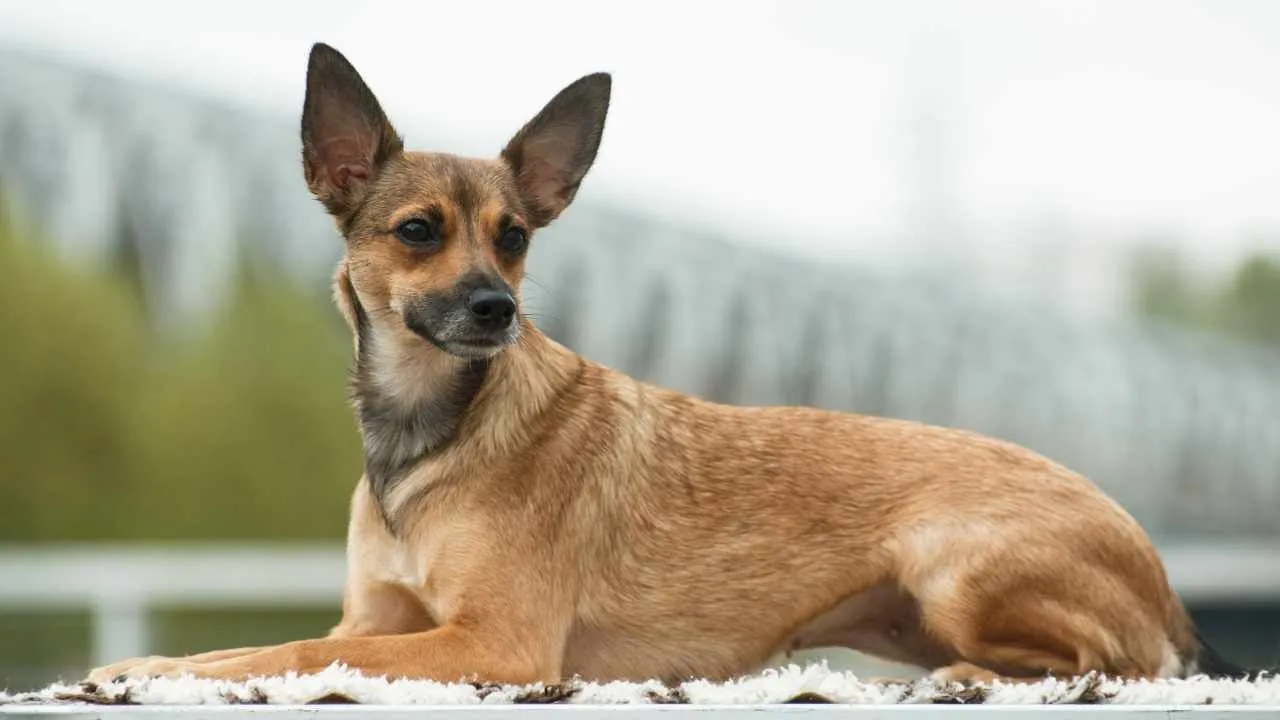
The Peruvian Inca Orchid has smooth, hairless skin that feels warm and supple, often described as similar to soft suede. Their ears are large, thin, and slightly folded, standing out due to the absence of surrounding fur. In cooler climates, the skin needs protection since it lacks insulation.
Grooming Is About Skin, Not Fur
Unlike coated breeds, their grooming focuses on skin hygiene using mild moisturizers or dog-safe sunscreens. Ear care is equally delicate, requiring regular cleaning to prevent dryness and debris buildup. Bathing schedules depend on weather and skin condition rather than shedding.
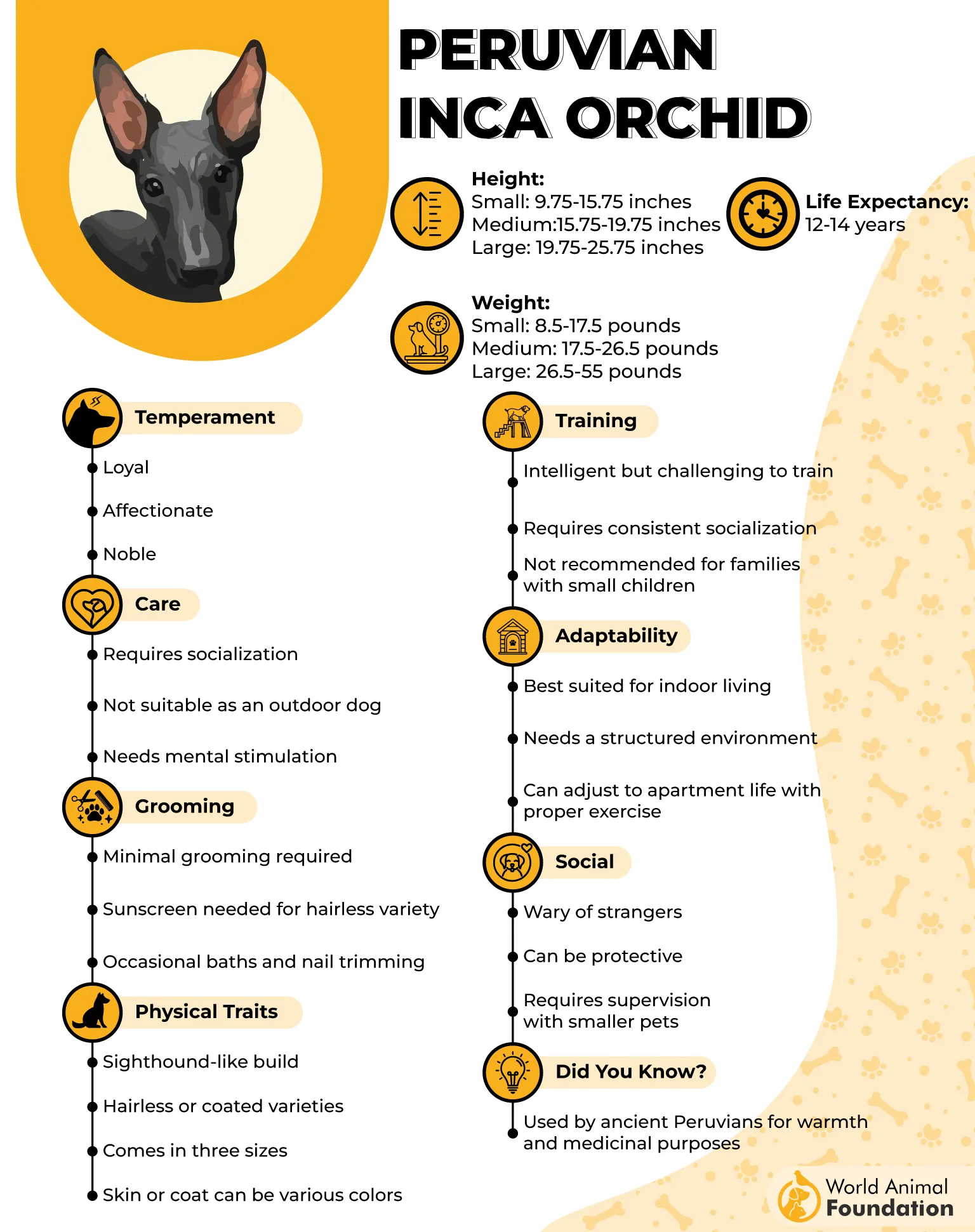
A Reserved Yet Devoted Personality
They tend to be cautious around new people but show deep loyalty once bonded with family. Their alert nature and sensitive hearing make them highly responsive to environmental sounds. Though quiet indoors, they maintain a watchful presence and can be intensely focused.
Ancient Roots and Adaptation
This breed dates back to pre-Incan civilizations, with hairless varieties appearing in ancient Peruvian pottery. They were treasured in different regions for both their warmth and companionship. Officially recognized in three sizes, the breed remains a rare sight outside South America.
8. Norwegian Lundehund
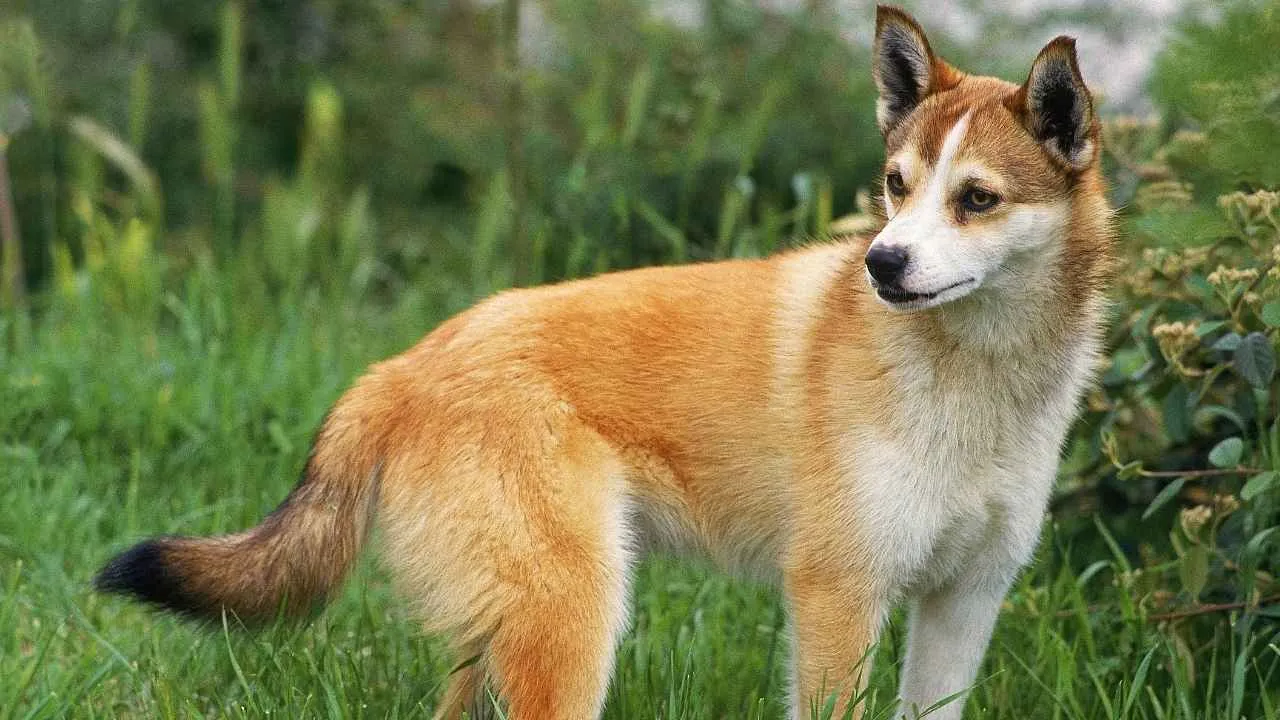
The Norwegian Lundehund stands out with a highly flexible neck and uniquely shaped feet adapted for climbing rocky terrain, as PetMD claims. Their six toes on each foot help them grip surfaces that other dogs would slide on. This breed was developed in Norway’s Lofoten Islands, where puffin hunting required agile movement.
Coat and Size Suited for Tough Weather
Their double coat resists cold and damp conditions, with a dense undercoat and a harsher top layer. While they are small in stature — usually under 16 pounds — their resilience is tied to their historical environment. Regular brushing keeps their fur free of dead hair during seasonal shedding.
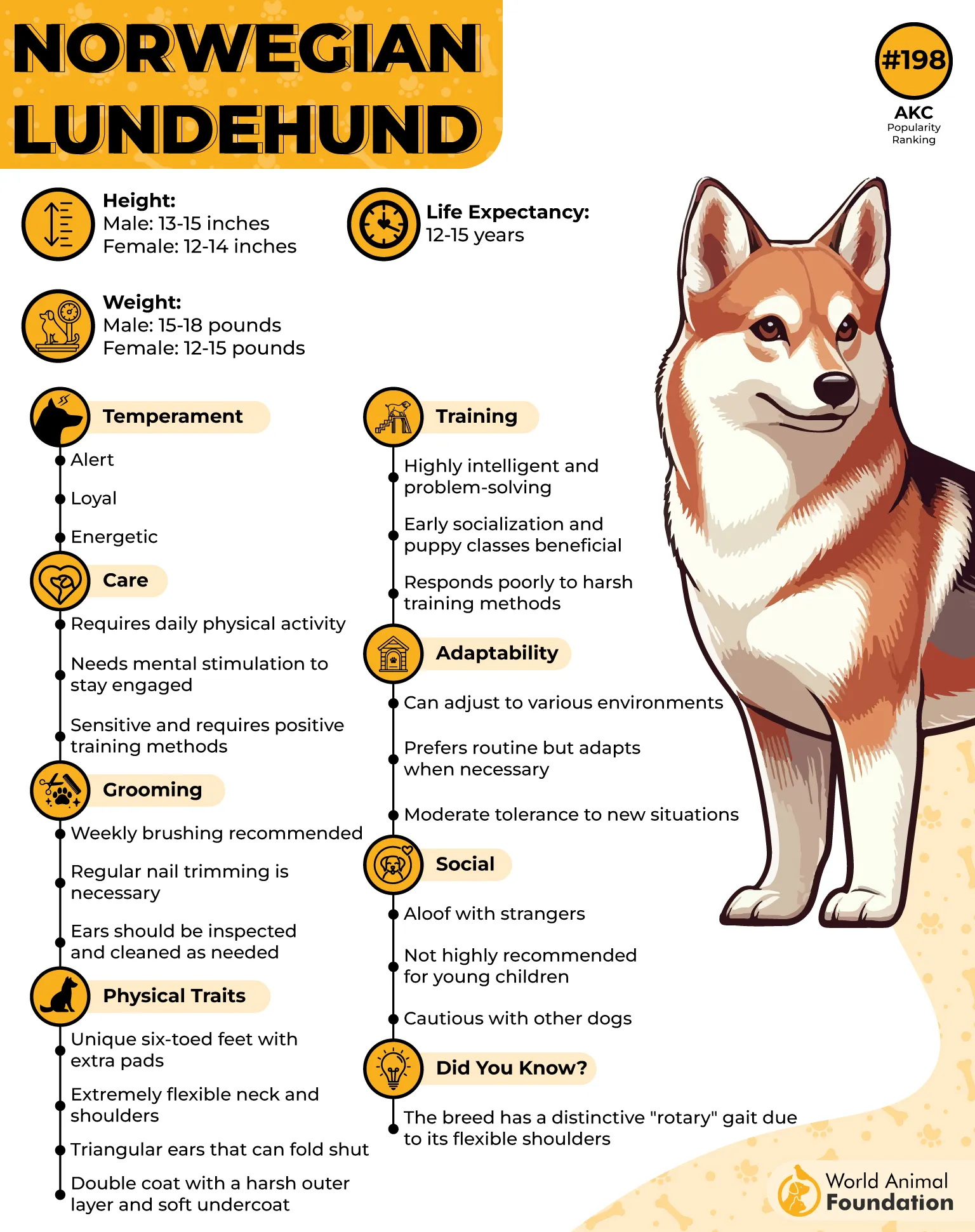
Alert Nature with Reserved Social Behavior
Lundehunds are observant and often cautious around unfamiliar settings or people. They tend to stay close to familiar humans while surveying new surroundings quietly. Early socialization helps them adapt better, as they’re less eager to approach strangers than more social breeds.
Unusual Anatomical Traits Affect Care
Besides extra toes, they can close their ears to block dirt and moisture, especially during outdoor activity. Their shoulder joints allow them to extend their legs flat to the side — a trait that prevents falls on jagged rocks. These unique features also mean regular health checks for joint and digestive health.
9. Cambodian Razorback
The Cambodian Razorback stands out for the distinct ridge of hair growing in the reverse direction along its spine. This feature runs from the shoulders to the tail and varies in width and length across individuals. The surrounding coat is coarse, dense, and often white or pale in color, especially among village-raised dogs.
Physical Strength in a Compact Frame
This breed tends to be muscular and slightly longer in body compared to other native Asian dogs. Their legs are sturdy with paws built for rough, uneven terrain commonly found in Cambodia’s countryside. Their tail curls up naturally and balances well with their thick body structure.
Independent Yet Deeply Observant
Cambodian Razorbacks are known for being watchful and calm rather than highly energetic or attention-seeking. Their independence doesn’t mean disinterest — they respond subtly to their environment and can be quietly protective of familiar people. This makes them especially suited to traditional rural homes.
Presence Rooted in Local Culture
Though not formally recognized by major kennel clubs, the breed holds regional significance in Cambodian culture. These dogs often roam freely in small communities and are known for their resilience in hot, humid climates. Their lineage traces back through local populations rather than formal breeding programs.
Conclusion
Not all dogs fit into the box of “popular dog breeds.” Some stand out with features that seem almost unreal—extra toes, ridged backs, or no hair at all.
These weird-looking dogs might not show up in everyday parks, but their stories and traits are unforgettable. From webbed feet to skin that needs regular bathing, each of these unique dogs has a past that explains their form.
While the American Kennel Club doesn’t recognize all of them, their presence in local cultures speaks volumes. For anyone drawn to the rarest dog breeds, these weird-looking companions are proof that normal isn’t always better.


